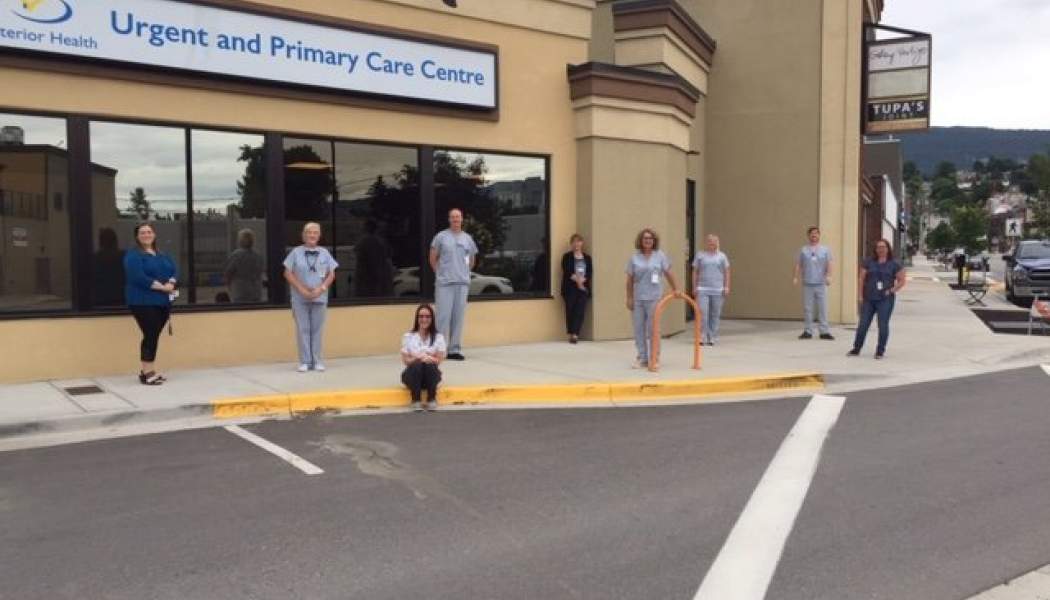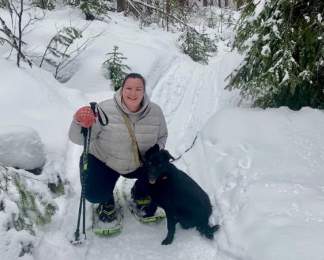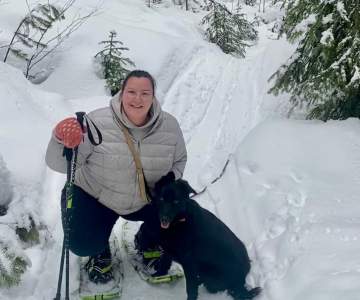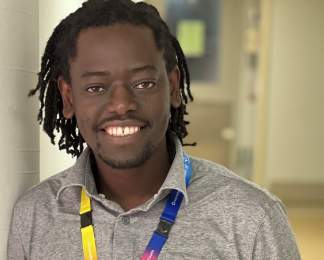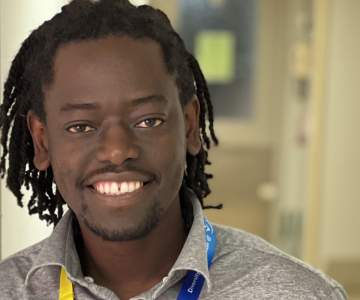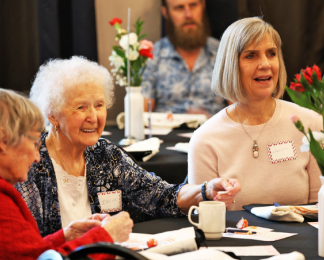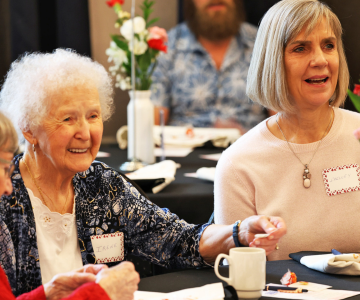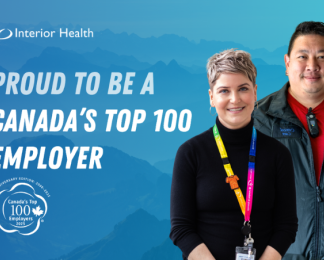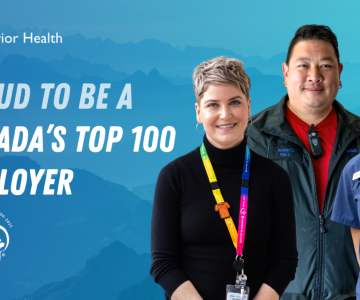The old saying that the whole is greater than the sum of its parts – in the case of Interior Health’s Urgent and Primary Care Centres, where individual health care professionals work together in close collaboration to support the needs of patients, that couldn’t be more true.
Here, teams of health-care providers that may include family physicians, nurse practitioners, registered nurses, physiotherapists, social workers, and medical office assistants provide urgent and primary care for people, particularly those who may not have access to a family doctor or nurse practitioner, giving them access to care when they have health concerns that need to be seen within 24 hours but don’t require a visit to an emergency department. These team players all bring their individual knowledge of the health-care system to the table. Collectively, that’s a powerful resource.
And a valuable one in the midst of the COVID-19 pandemic, which added new uncertainty and new complexities for some people. As businesses closed out of concern for transmission of the virus, some people were unable to access some of their most basic health-care needs, and many of them turned to UPCCs for solutions.
“I remember one elderly woman who needed blood glucose monitoring strips for her diabetes – they weren’t available elsewhere. The team was able to call our diabetes educator and partner with a pharmacy to get her strips,” recalls Allison MacInnes, North Okanagan Primary Care coordinator who is currently overseeing the Vernon UPCC, which originally opened in October 2019 within the Vernon Downtown Primary Care Centre, but relocated to a new standalone location at 101-3105 28th Ave. on March 31 – right at the height of the COVID-19 crisis.
Allison says it’s because of the team of clinicians gathered at the Vernon UPCC that they’ve been successful in bridging the gaps for patients needing primary care. In addition, for people without a regular physician or nurse practitioner, they’ve ensured there is a connection to ongoing care beyond their visit to the UPCC through attachment to a primary care provider.
“The team comes from all parts of Interior Health and the community, and they know how to link people with the care they need,” she says, adding that team members share their breadth of knowledge at their morning huddles – and watching them in action is, in itself, poetry in motion. “It’s all about how can we provide wraparound services for that patient, now and in the days ahead? It’s really cool to see how caring they are.”
Six UPCCs now open
The Vernon UPCC is one of six now open in Interior Health – the others are in Kamloops, Kelowna, Castlegar, West Kelowna and Penticton. All of them offer team-based, urgent and primary care for all residents in their communities. But all four UPCCs also differ in key ways – because each was developed through collaboration with community partners, in particular the Divisions of Family Practice and Aboriginal communities, with a focus on providing services that would meet the specific needs of that region.

In Vernon, that means there is now an option for urgent and primary care for people who, because of their circumstances, would otherwise find it difficult to connect with a physician or nurse practitioner through the more traditional avenues of care. As part of the UPCC planning, which was supported by the Shuswap North Okanagan Division of Family Practice, local physicians highlighted the need for support for people experiencing homelessness or other social barriers to care, including mental health and substance use issues. The team at the Vernon UPCC was then strategically design
ed to include professionals with the skills to meet the unique needs of this population, including social workers and mental health and substance use clinicians. The Vernon UPCC has provided care for 5,578 patients since opening, and a total of 819 people are now connected to the UPCC primary care team for ongoing care.
The Castlegar UPCC opened April 6 at the Castlegar and District Community Health Centre. It’s the first UPCC in Interior Health developed using a rural model, with services that are closely located to and integrated with an emergency department – in this case, the emergency department at the Castlegar Health Centre. This integration allows local family physicians, who also support services at the Health Centre (including the emergency department), to become part of a primary care team at the UPCC. This model of care ensures the stability of existing health services, and expands access to urgent and primary care services for people living in Castlegar. In the short time it’s been open, the Castlegar UPCC has already seen 522 patients and connected two people to a local primary care provider for ongoing care.
The Kamloops Urgent Primary Care and Learning Centre (UPCLC) opened in June 2018 – B.C.’s first urgent and primary care centre. In Kamloops, many people are without a regular family physician or nurse practitioner, so the focus of this centre is two-fold – providing urgent care for people living in the Kamloops area, whether they have a primary care provider or not, and connecting those who don’t to ongoing regular care. This connection is made through the 8-1-1 Health Connect Registry, a centralized waitlist established to help link people to new providers. While they wait to be connected, their primary care needs are met through the UPCLC – it has had 34,525 patient visits since opening. Also unique to Kamloops is the partnership developed with the University of British Columbia’s family medicine resident training program that sees resident doctors working under the supervision of experienced physicians, allowing them an opportunity to start building a practice locally – there have been 1,044 people connected to the UPCLC from the 8-1-1 registry who are now able to receive ongoing are from physicians there.
The focus of the Kelowna UPCC, which opened in December 2019, is similar to that of Kamloops – providing timely access for people to urgent and primary care when they need it. In addition, the Kelowna UPCC provides ongoing primary care for patients as they wait to be connected to a family physician or nurse practitioner – so far, 1,167 patients have been temporarily attached in this way. In Kelowna, that connection is made through the Central Okanagan Division of Family Practice’s Find a Family Doctor Program. Further, the UPCC team in Kelowna has developed primary care services that align with and augment the services already established by local practitioners in the community, and have done so in a clinic that is centrally located and has accessible transportation options for young families, older adults, and students. Since opening in late December, more than 7,726 patients have visited the Kelowna UPCC.
Health-care partner collaboration creates a tailor-made approach for communities
In all four cases, collaboration with local partners was key, says Jason Giesbrecht, IH’s Executive Director of Primary Care Planning.
“Whenever we are able to work with partners, in particular local Divisions of Family Practice and Aboriginal communities, we are finding local solutions to local needs. We are hearing directly about what is needed most in their communities,” he says. “Their feedback has helped us strengthen our health-care partnerships, while increasing access to quality care in our communities. It’s exciting work.”
Planning is currently underway for future UPCCs in Interior Health.
Visit Interior Heath’s website for more information on IH’s Urgent and Primary Care Centres.

